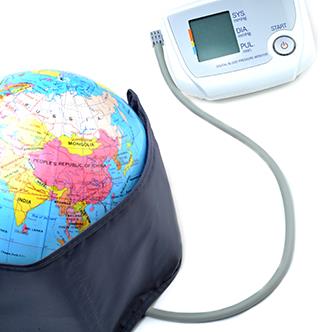
Despite global efforts to reduce blood pressure levels, high blood pressure has become an increasing concern in low-income countries, according to a recent report published in the New England Journal of Medicine.
This study, which analyzed blood pressure data from 200 countries, looked at global blood pressure trends over the past four decades. The goal, explain researchers, was to see how different countries compare on blood pressure levels and trends. High blood pressure is a major public health concern, as it’s the leading global risk factor for both heart disease and kidney disease. While some research has helped shed light on recent trends, authors argue that none provides a complete picture of blood pressure trends around the world.
To learn more, researchers pooled data from 1,479 studies with blood pressure measurements on 19.1 million adults. Measurements included systolic blood pressure, which is the top number in a blood pressure reading, and diastolic blood pressure, which is the bottom number. High blood pressure is defined as a systolic blood pressure of 140 mmHg or higher or diastolic blood pressure of 90 mmHg or higher.
These studies were conducted from 1975–2015 and covered 97.5% of the world’s population.
The good news is that overall, the average global blood pressure in 2015 was near the target range, defined as less than 120/80 mmHg. Researchers also found that average blood pressure level decreased significantly in high-income countries.
However, average blood pressure has increased in middle and low-income countries, particularly in south Asia and sub-Saharan Africa. The most recent data from 2015 shows that high blood pressure still affects 24% of men and 20% of women worldwide.
Authors also note that the number of adults with high blood pressure nearly doubled from 594 million in 1975 to 1.13 billion in 2015, which is largely due to both population growth and ageing.
Based on findings, experts believe it’s going to take a lot of work to combat high blood pressure rates around the globe. In 2013, the World Health Assembly announced a global target of reducing high blood pressure rates by 25% by 2025. With growing rates of high blood pressure in poorer countries, achieving this goal will be difficult. However, experts hope that through focused efforts and tailored interventions, we can help combat rising blood pressure and high blood pressure rates in all corners of the world.